Categories
Subjects
Authors
Artists
Venues
Locations
Calendar
Filter
Done
March 12, 2018 – Review
The Armory Show and Independent Art Fair
Ania Szremski
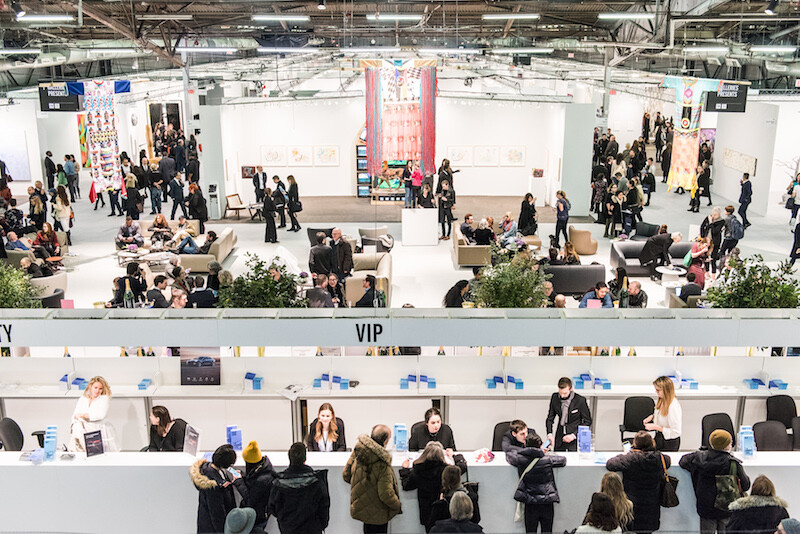
The art-fair think piece is as stale as the art fair itself. What could be said already has been, from puzzling over the mysterious machinations of the market, to annual denunciations from gallerists, and ethnographies of those who buy and those who sell. The form of writing that is truest to the form of the art fair is the nimble listicle, the best-or-worst-of reportage, the photo-heavy guided tour; the spirit of the fair is inimical to the weightier, slower-moving thousand-word reflection.
Even though visiting the storied behemoth that is The Armory Show and the leaner, more winsome upstart Independent was something of an exercise in “seen one, seen them all,” I was nonetheless startled to be confronted by works that I actually liked—that offered a cool respite from the surrounding fervor of the art-mall experience, that compelled dreamier reflection. And so begins my own inevitable best-of list: at The Armory, Upfor Gallery from Portland, Oregon, showed Iranian artist Morehshin Allahyari, who commanded sustained attention with her spellbinding videos Huma (2016), Ya’jooj and Ma’jooj (2017), and Aisha Qandisha (2018), each depicting voracious Near Eastern goddesses and fever-causing spirits with glitched-out animations and oracle-like narrations. And even as Nam June Paik’s multimedia sculptural …
March 3, 2017 – Review
The Armory Show and Independent Art Fair
Brian Karl
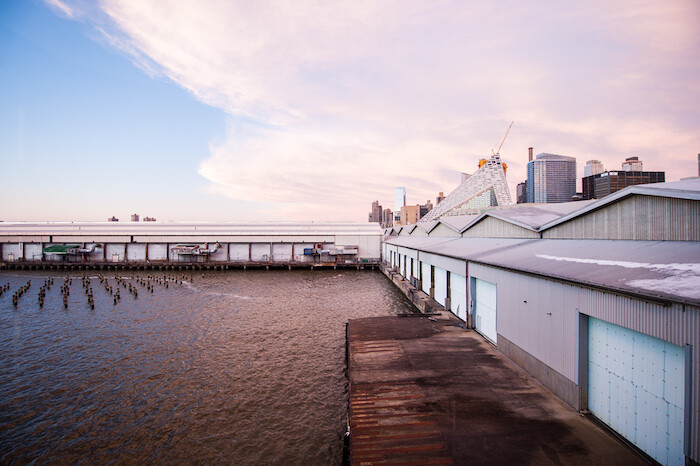
If the art auction is the ultimate hunger games of ostentatious display for your taste and bank account, the art fair is the auction’s suburban or exurban cousin: the mega shopping mall, where everything is under one roof. Whether or not you went in knowing what you wanted to get and what your individual sensibility might consist of, there is a tidal flow of people and things that overwhelms and cross-wires your brain toward shutdown.
Any individual piece of art, of course, has its competitors for attention at the fair, including not only a swirling mass of people (most decked out in lively garb) but the mass of art itself, an ongoing assault not just to the eye but to the mind demanding response to an endless stream of questions, starting with “What is that?” and often ending with not only “Is it good or bad?” but “Why?” or “What is it good for?”
The Armory Show, having established itself after a mere 22 years as the go-to art fair of scale in New York, is attempting this year to buck off a sense of staidness, of predictability and unmaneuverability. Filling two of the giant piers on the Hudson River (appropriately enough, …
March 4, 2016 – Review
Armory Show and Independent
Sam Korman
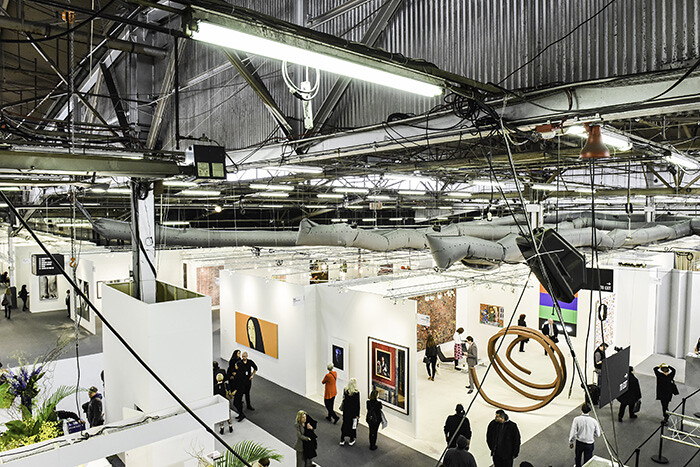
“Who isn’t here?” I asked myself on the lead-up to the 2016 incarnations of the Armory and Independent art fairs. And I asked myself again upon leaving. A few weeks ago, I received the announcement that Laurel Gitlen Gallery closed. As an art student in Portland, Oregon, I had missed Laurel’s original project space by a year or two, but it possessed mythic status for me. After she settled in New York, her gallery lent credibility, if not a lingering inspiration, to those of us trying to organize exhibition spaces as something punk, smart, and deliberate. We followed in her footsteps—albeit in our garages—and saw that our activities could be legible in New York or Los Angeles or wherever the conversation was happening. I am not sure how many people from my Portland community would count Laurel as a direct influence, but most of my friends there have moved to New York, most still work in art or as artists, and we discussed the gallery’s closure with bummed-out, downturned glances. It’s hard not to feel indignant that the art world could suck a personal history up its ass, but an organizer can be around for one or two (or, in …
March 6, 2015 – Review
Armory Show and Independent
Orit Gat
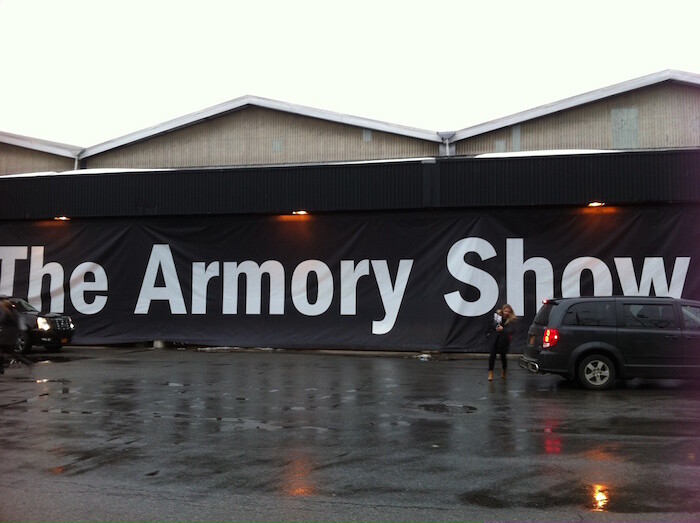
Trendspotting is a competitive sport at art fairs. Still, with every fashion, there’s always an artist who either reinvents worn forms or executes them so well it’s hard not to admire. This year, it’s the case of objects hanging from fishing lines—a frequent fair staple—and Glenn Kaino’s A Shout Within a Storm (2014) on view at Los Angeles’s Honor Fraser is the perfect example. The 149 copper-plated steel arrows, shining in the strong exhibition lighting, filled the booth, especially since Kaino’s paraffin brick wall, The Last Sight of Icarus (2014), was positioned diagonally against the back corner, pressing the space even further. They’re not site-specific, but seeing them together at a fair—where they seem monumental and ambitious in comparison to all the paintings hanging on drywall—becomes not only impressive, but also meaningful. When sameness abounds, it’s key to focus on the work that’s different.
At Philipp von Rosen Galerie, Cologne, Anna K.E. showed Post-Hunger Generation (2015), comprising drawings on paper installed in a wooden structure. The architectural configuration served to frame the drawings and a small monitor, showing a man’s hands as he unwraps plastic packages and rearranges their contents (headphones, an SD card, a USB cable) on a table, to …
March 13, 2013 – Review
LETTER TO THE EDITOR OF ART-AGENDA
Media Farzin
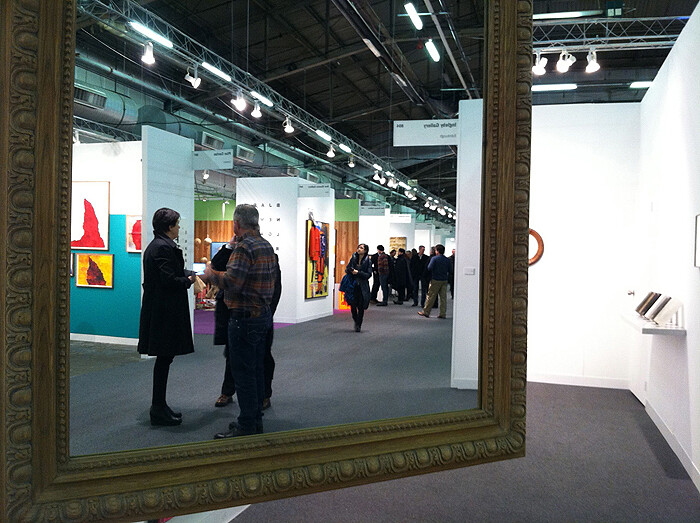
MY DEAR J—, when you did me the honor of asking for an analysis of the Armory Show, you said, “Be brief; do not write a review, but a general impression, something like the account of a rapid philosophical walk through the galleries, an overview of a century of art fairs.” Very well, you shall have your wish; not because your program accords (perhaps it does) with my own conception of that tiresome kind of article called an “Art Fair”; nor because your method is easier than the other—it is not, for generality always demands more effort than specificity, especially when historical research is involved; but simply because, above all in the present instance, there is no other possible way. Certainly I should have been more embarrassed if I had found myself lost in a forest of originality, if the contemporary art fair, suddenly modified, purified, and rejuvenated, had provoked floods of praise—a garrulous admiration—or necessitated whole new categories in the language of criticism. But there is nothing of all that, fortunately (for me). The thoughts suggested by the sight of the Armory are of so simple, so traditional, so classic an order, that a few pages will doubtless be …
March 4, 2011 – Review
The Armory, ADAA The Art Show, and Independent
Karen Archey
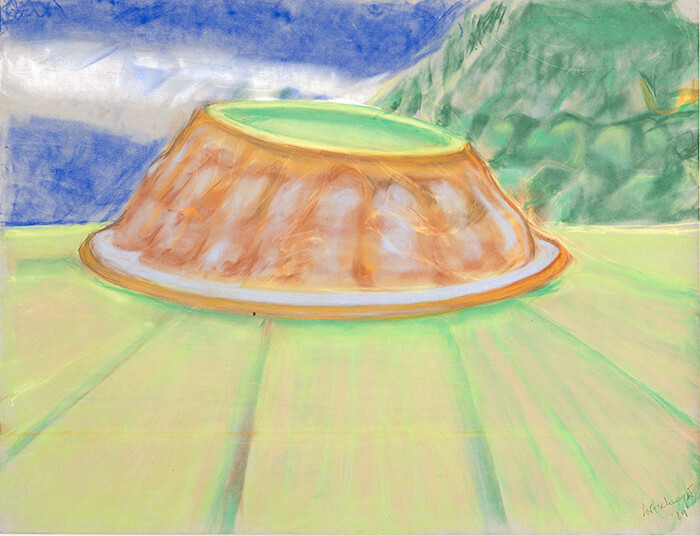
Armory Arts Week 2011 may be remembered as the year of art fairs that failed to defy our expectations. Unlike 2010, which saw the debut of Independent, or 2009, in which the glimmerings of a healthy art market emerged after the major 2008 recession, despite some shifts in gallery loyalty, the 2011 Armory Arts Week remains more or less the same. Swiping many blue-chip galleries from the Armory, the Art Dealers Association of America (ADAA), The Art Show launched on Park Avenue to reveal mostly stuffy secondary market offerings. The Armory International, though it experienced a slight slippage in taste this year, continued to dominate as the most massive and greatest accumulation of all influential galleries amidst the art fairs in New York. Independent, in its sophomore year at the “old Dia building” on 22nd street in Chelsea, continues to act as the vanguard of the fairs, attempting to re-work the art fair model physically and intellectually.
It’s the paintings of Alice Neel that greet the viewer arriving at the ADAA Art Show in David Zwirner’s booth—perhaps diminutive in size compared to those at the International. Zwirner is one of the most blue of blue-chip dissenters of the Armory, including Friedrich …